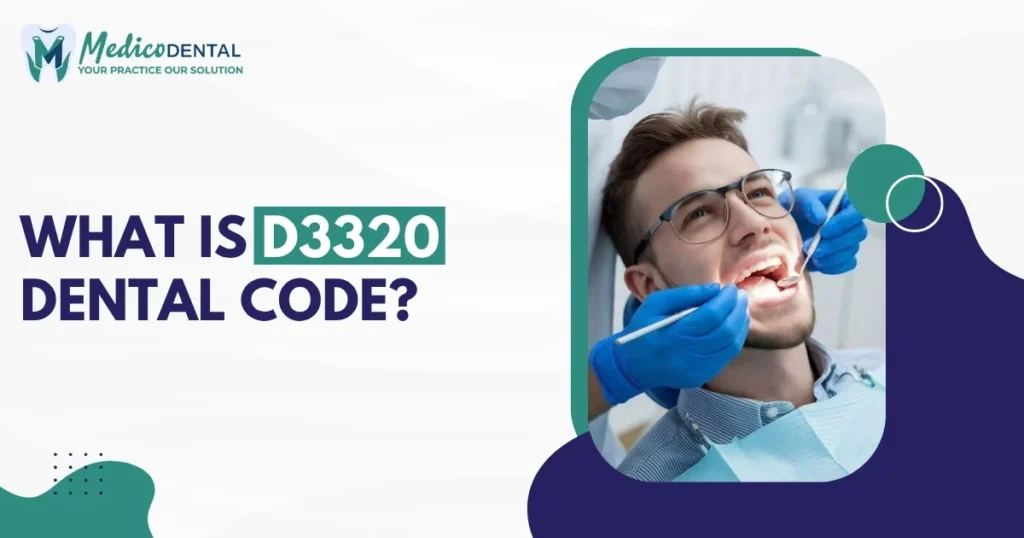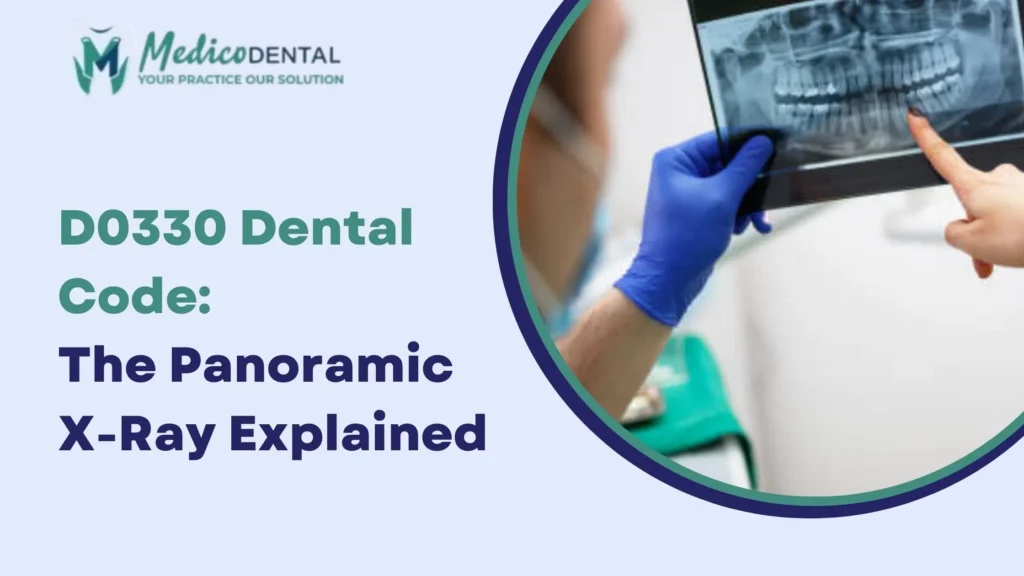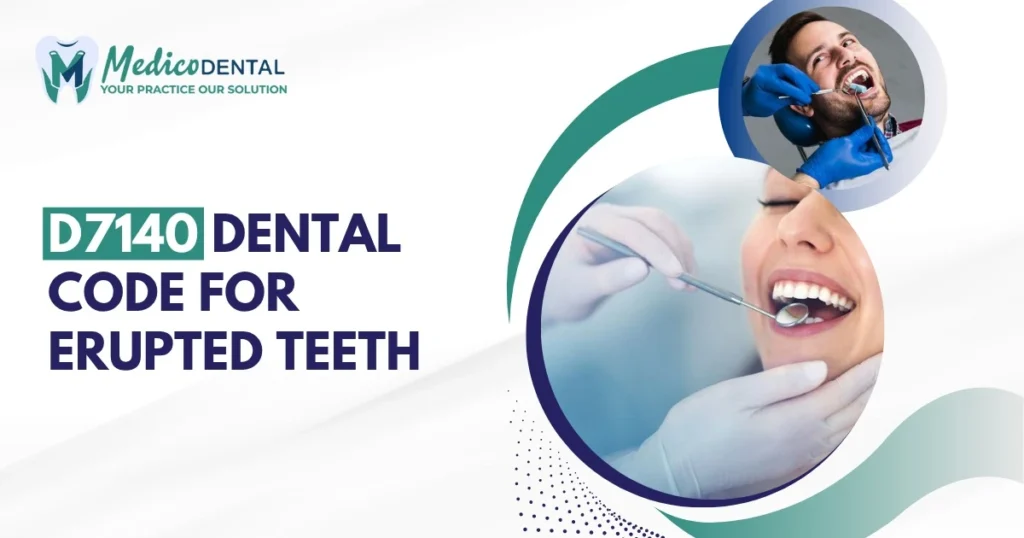The D3320 dental code refers to a specific endodontic procedure performed on premolar teeth to treat infection or damage to the pulp. Understanding this code is important for both dental professionals and patients as it ensures proper billing and treatment planning. In this article, we’ll explore the details of the D3320 dental code, its significance, the procedure steps, and its impact on dental care.
What is the D3320 Dental Code?
Significance in Dental Procedures
The D3320 dental code is used to classify endodontic therapy for premolar teeth, a critical treatment when the pulp of a tooth becomes infected or damaged. The code is important for billing purposes and guides dental professionals in delivering the right care. It ensures that the procedure is accurately documented and reimbursed by insurance providers, making it an essential part of dental practice management.
What is D3320 Dental Code?
Definition and Overview
The D3320 code refers to “Endodontic therapy, premolar tooth (excluding final restoration).” This treatment involves the removal of the pulp from a premolar tooth, followed by cleaning, disinfecting, and filling the root canal. The procedure aims to preserve the tooth’s structure and function, ensuring that the tooth remains intact and healthy for as long as possible. It is a crucial treatment option for patients experiencing severe tooth decay or trauma.
Understanding Endodontic Therapy for Premolar Teeth
Endodontic therapy, commonly known as a root canal, is a procedure used when the pulp inside a tooth becomes infected, inflamed, or damaged. The D3320 code applies specifically to premolar teeth, which are located between the molars and incisors. These teeth play an essential role in chewing and grinding food, making it important to preserve their functionality through endodontic treatment.
Purpose of D3320 Dental Code
Why D3320 is Important
The D3320 dental code is essential for several reasons. First, it ensures that endodontic therapy on premolar teeth is properly billed and recorded, facilitating smooth insurance claims. Secondly, it guides dental professionals to understand the specific requirements for treating premolar teeth. By accurately categorizing the procedure, the D3320 code helps standardize treatment protocols across dental practices.
Impact on Treatment Planning
The D3320 code helps clinicians plan appropriate treatments for patients with compromised premolar teeth. By understanding the procedure steps and what the code represents, dentists can offer more precise care. Additionally, it helps in setting expectations for patients regarding treatment duration, costs, and post-procedure care.
Steps Involved in the D3320 Procedure
Key Procedure Steps
The D3320 procedure involves several steps, each critical for ensuring the success of the root canal treatment. These steps ensure that the infection or damage to the pulp is fully addressed, allowing the tooth to heal and function normally.
Local Anesthesia and Pulp Removal
Before starting the procedure, local anesthesia is administered to numb the area around the affected tooth. This step ensures that the patient experiences minimal discomfort during the procedure. Once the area is numbed, the dentist will carefully remove the infected or damaged pulp from the tooth’s interior.
Cleaning, Disinfection, and Filling
After the pulp is removed, the dentist cleans and disinfects the root canal to eliminate any bacteria or debris. This step is essential to prevent further infection. Following this, a biocompatible filling material is placed into the canal to seal it, preventing future issues.
Temporary Filling Placement
Once the root canal is filled, a temporary filling is placed to protect the tooth until a permanent restoration, such as a crown, can be applied. The temporary filling serves as a temporary barrier while the tooth heals and prepares for the final restoration, ensuring that the tooth remains secure during the healing process.
Billing with D3320 Dental Code
How D3320 is Used for Billing
The D3320 dental code is a crucial part of the billing process for endodontic therapy on premolar teeth. Dental practices use this code to accurately document and submit claims to insurance providers for reimbursement. The code ensures that the treatment is recognized as a valid medical procedure, streamlining the insurance approval process. When correctly applied, it helps dental professionals receive the proper compensation for the procedure.
Factors Affecting Cost
The cost of D3320 treatment varies based on several factors, including the complexity of the procedure, the dentist’s location, and whether additional treatments are needed. The cost can also be influenced by the type of dental insurance a patient holds, as different insurance plans may cover various aspects of the procedure differently. Additionally, if the tooth requires additional restorative work such as a crown or post-procedure treatments, these costs will be added to the total.
Typical Insurance Coverage
Insurance coverage for D3320 procedures often depends on the patient’s policy and the level of coverage they have. Many dental insurance plans cover root canal treatments, including those for premolar teeth, but they may limit coverage to certain amounts or have specific conditions that need to be met. Patients are advised to check with their insurance providers to understand the coverage details, including deductibles, copayments, and the approval process. Some plans may cover the entire cost, while others may require partial payments from the patient.
Differences Between D3320 and Other Endodontic Codes
Comparison with D3330
While the D3320 code is used for endodontic therapy on premolar teeth, the D3330 code applies to molar teeth. Both codes represent similar procedures, but the distinction lies in the type of tooth being treated. Molars tend to be more complex due to their larger size and multiple roots, which can result in a more intensive treatment. The D3330 code, therefore, typically involves more detailed work and a slightly higher cost.
When to Use D3320 vs. D3330
D3320 is specifically used for premolars, which are located between the incisors and molars. These teeth typically have one or two roots. D3330, on the other hand, is used for molars, which have multiple roots and generally require more intricate treatment. The decision to use D3320 or D3330 depends on the tooth that needs treatment, and dentists will assess the complexity of the procedure based on the tooth’s anatomy.
Other Relevant Dental Procedure Codes
Besides D3320 and D3330, there are other codes used for endodontic procedures. These include:
- D3310: Anterior tooth root canal therapy.
- D3340: Bicuspid (premolar) root canal therapy, typically for cases involving more complex treatment.
- D3350: Molar root canal therapy.
These codes help to categorize various endodontic treatments depending on the type of tooth and the complexity of the procedure.
When is D3320 Code Used?
Specific Situations for D3320 Application
The D3320 dental code is used when a premolar tooth requires root canal therapy due to infection or damage to the pulp. This code is applied when a patient experiences significant pain, swelling, or sensitivity in their premolar teeth, which are often the result of deep decay, trauma, or infections. The procedure aims to save the tooth by removing the infected pulp and filling the root canal.
Common Cases for Premolar Treatment
Common cases for D3320 treatment include:
- Severe Decay: When a cavity extends deep into the tooth, affecting the pulp.
- Trauma: If the tooth is cracked or broken, exposing the pulp to bacteria and infection.
- Infection: In cases where bacteria have infiltrated the pulp, causing pain and possible swelling.
In these situations, D3320 is used to preserve the tooth and restore its functionality, avoiding the need for extraction.
Conclusion
The D3320 dental code is an essential part of the endodontic treatment process for premolar teeth. It allows for accurate billing and treatment documentation, ensuring that both dental professionals and patients are aligned in their expectations. This code is critical for ensuring that the necessary treatments are provided and reimbursed appropriately.
Accurate use of the D3320 code helps streamline the dental billing process, ensuring fair reimbursement for the treatment provided. It also plays a significant role in treatment planning, guiding dental professionals in delivering effective care. Understanding this code is crucial for both patients and dental offices to ensure that endodontic procedures are performed and documented correctly, making the overall experience smoother for everyone involved.
FAQS
Can D3320 Be Used for Other Teeth?
Ans. No, the D3320 code is specifically for premolar teeth. For anterior (front) teeth, the code used is D3310, while for molar teeth, the D3330 code is used. It’s essential to use the correct code to ensure accurate billing and treatment. The procedure for each tooth type may vary slightly, so using the right code ensures that the dentist’s work is documented properly for insurance purposes.
H4: What to Expect During the Procedure?
Ans. During a D3320 procedure, patients can expect several steps:
- Anesthesia: The dentist will administer local anesthesia to numb the area around the affected premolar.
- Pulp Removal: The dentist will access the tooth’s pulp chamber and remove any infected or damaged pulp.
- Cleaning: After the pulp is removed, the root canal is thoroughly cleaned and disinfected.
- Filling: A biocompatible material is used to fill the root canal.
- Temporary Filling: A temporary filling is placed to protect the tooth while the permanent restoration is planned.
Patients can expect some discomfort or mild pain after the procedure, but this is usually managed with over-the-counter pain relief and should subside after a few days.



